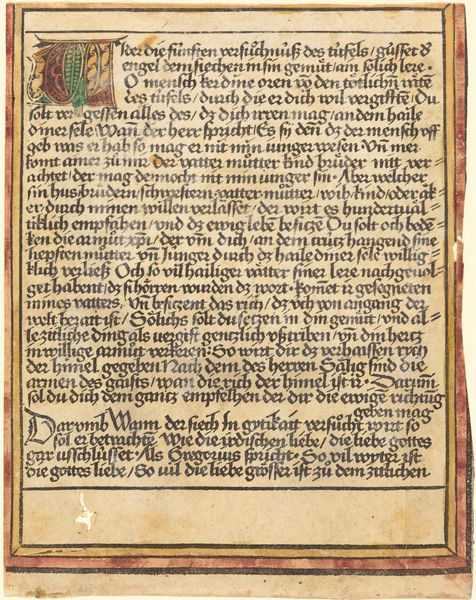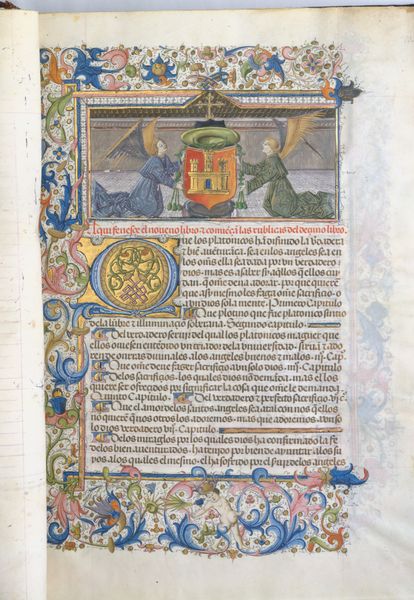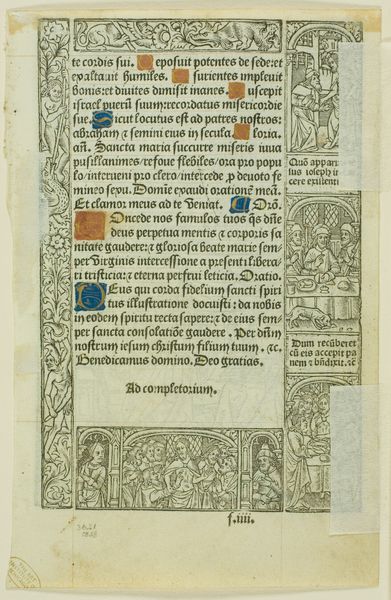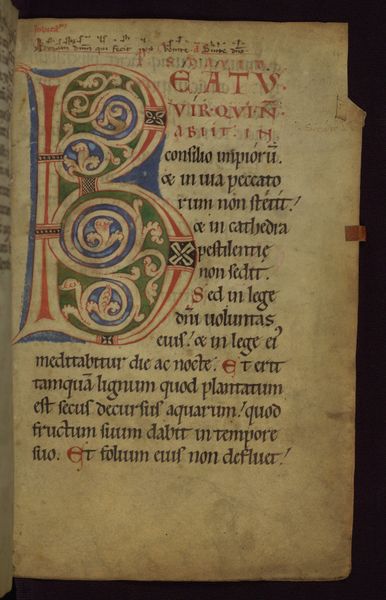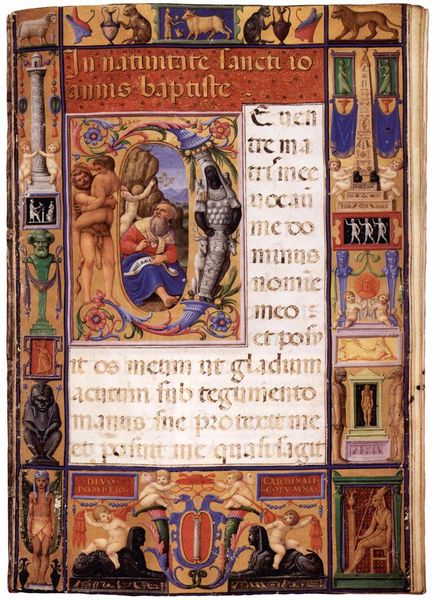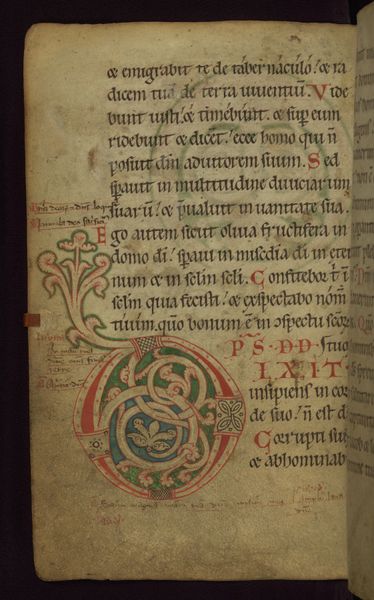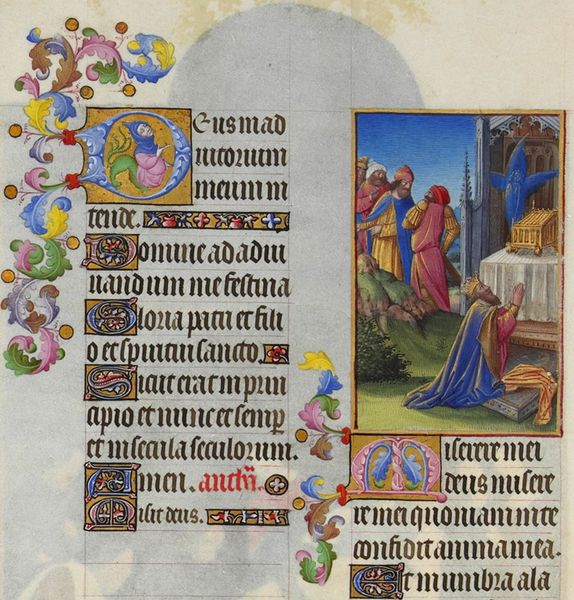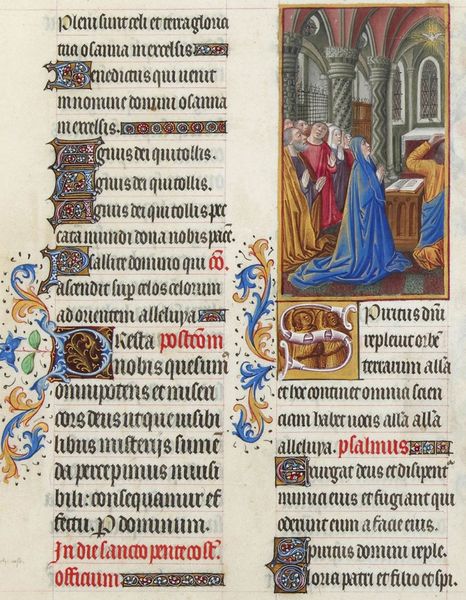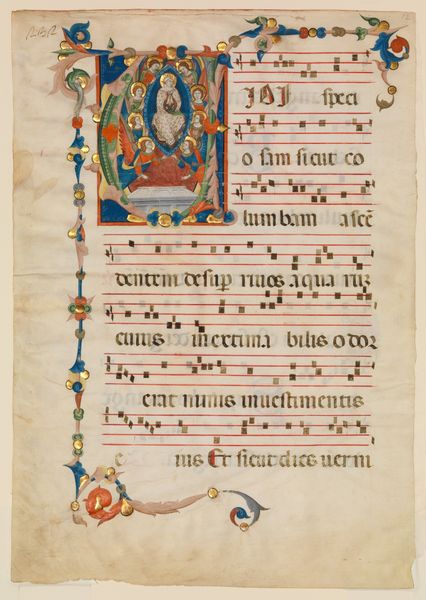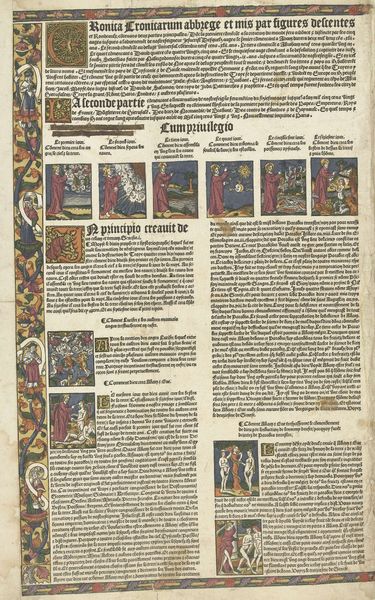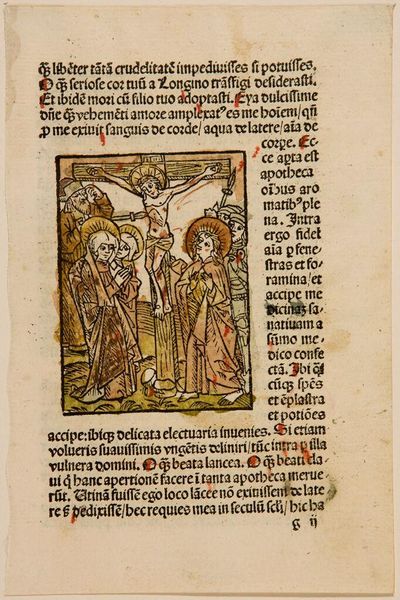
tempera, watercolor
#
medieval
#
tempera
#
figuration
#
watercolor
#
coloured pencil
#
mixed media
Dimensions: 21 15/16 x 15 5/8 in. (55.72 x 39.69 cm) (sheet)
Copyright: Public Domain
This illuminated leaf from an antiphonary, created by Bonaventura a Montepulciano, presents a vision of divine authority. God sits enthroned, flanked by figures that evoke both classical and Christian traditions, a lion and the angels, symbols of strength, glory, and divine messengers. The enthroned figure, a motif stretching back to ancient Near Eastern art, signifies power and order. Consider the scepter he holds and the scales of justice, echoed in images of rulers and deities across cultures, from Zeus to earthly kings. This imagery connects the divine with earthly authority, yet it also touches upon a deeper, more primal understanding of justice and judgment. The image, rendered in vibrant colors, taps into collective memories, evoking a sense of awe and perhaps even a bit of fear, a powerful force that engages viewers on a subconscious level. The visual language of power and judgment transcends time, reappearing and evolving through history, consistently evoking a powerful emotional response.
Comments
minneapolisinstituteofart about 2 years ago
⋮
Even after printed books were common, handwritten illuminated manuscripts continued to be produced as luxury editions in the 16th and 17th centuries. This antiphonal page exemplifies the conflation of persistent medieval traditions and Renaissance secular elements. It is signed and dated on the lower frame of the miniature: 1645 Fra Bonaventura a Montepulciano fecit. Montepulciano, a provincial town near Siena, was a center of humanistic learning in the 16th century. In the historiated initial, the enthroned God the Father is encircled by a frame composed of caryatids, putti and floral festoons—all typical High Renaissance motifs. A host of symbolic animals portray the human conflict between vice and virtue, sin and redemption. The ox is a symbol of patience and strength, while the pelican represents Christ's sacrifice on the Cross and thus the sacrament of Eucharist. The ape symbolizes malice and cunning and the cat, laziness and lust, whereas the dog signifies watchfulness and fidelity. The words AD LAUDES in the cartouche at the top of the page indicate that it begins the service for lauds (about 5:00 a.m.). The words are taken from psalm 92, as noted by a later hand in the upper right-hand corner.
Join the conversation
Join millions of artists and users on Artera today and experience the ultimate creative platform.
